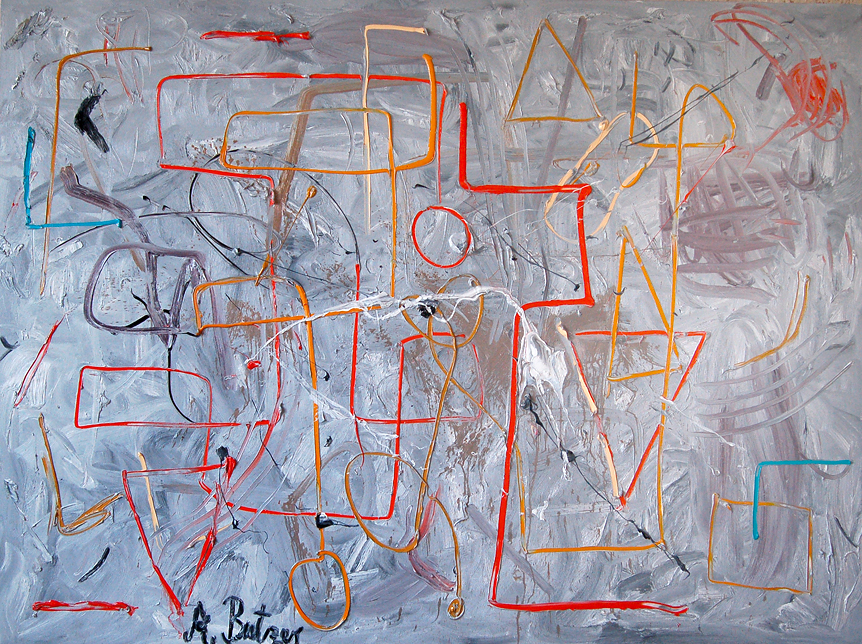Online Gallery for Art Collection
The contemporary art collection which is exhibited at the UChicago Campus in Hong Kong, comprises artworks from global artists including those from the U.S., Hong Kong, China, Japan, Korea and India, to name a few.
Click on the names of artists below to view the art collection.

Title: Peela Heera, 2018
One of the most influential artists of his generation, Rasheed Araeen is a London-based artist, activist, writer, and curator. Araeen originally trained as an engineer before turning his focus to art-making. From the civil engineering training, he frequently employs geometric, architectural forms—like those found in Peela Heera—to address equality in society and art history. Today Araeen is considered a key figure in minimalist British sculpture. However, in the 1960s, he was largely excluded from this movement. As such, he developed an activist stance challenging Eurocentric views. Araeen founded the journals Black Phoenix, Third Text, and Third Text Asia, all of which address and establish the importance of the work of minority artists in global histories of art. His work, Peela Heera speaks to his engineering background and themes of structural integrity with its bisected geometric shapes that resemble the lattice structure of bridges. Though the piece is mounted on the wall, its sculptural presence highlights how Araeen’s work continually challenges the limits of the two-dimensional painted canvas.
 Title: Harvest No. 1, 2014
Title: Harvest No. 1, 2014
Liu Wei is a foremost member of the generation of artists who participated in Beijing’s highly experimental, underground art scene of the 1990s. Liu graduated from the National Academy of Fine Arts in Hangzhou in 1996. Well known for his rebellious and unconventional approach to art-making, Liu routinely makes works that are defiantly non-representational. While this work’s title likens it to a field of golden wheat, or even a Socialist Realist depiction of the countryside, its simple assemblage of foam, wood, and canvas undercuts any sense of monumentality. The jagged cut along its bottom third suggests contours of land forms, but the work as a whole remains a landscape that is neither urban nor rural, and ultimately of no particular place. With its sheer materiality and lack of reference points, the work asks the viewer to focus on pure form.
 Title: Chronicle Compression, 2018
Title: Chronicle Compression, 2018
Hong Kong-based artist, Andrew Luk’s work investigates how civilization is positioned in relationship to nature. Luk graduated graduated from the New England School of Art and Design (NESAD) in Boston, Massachusetts with a BFA in 2010. In the same year, he also graduated from Suffolk University in Boston, Massachusetts with a BA in European History. His artworks often employ unconventional materials to consider how human activity and systems of entropy and preservation impact the spaces that surround us, be those natural or manmade.
Chronicle Compression explores liminal spaces by making rubbings of overlooked surfaces on sites found within the University of Chicago Yuen Campus in Hong Kong. In order to make the work, Luk and his team made aluminum rubbings of different parts of the University’s Heritage architecture. From the Royal Engineer’s symbol to the building’s hearth, Luk documents and displays the multiple histories and uses of the site within a single work. Through archiving and documenting this site’s varied histories in visual forms, Luk explored the ways in which time has become inscribed within the site’s materiality and can, in turn, be transferred to the materials of his work.
 Title: Work 66-7A, 1966
Title: Work 66-7A, 1966
Best known for her large-scale ceramic works, Kimiyo Mishima is simultaneously interested in and terrified of the circulation of information, specifically as embodied in newspapers and magazines—two materials that feature prominently in her works. A self-trained artist working in postwar Osaka, Mishima worked in close proximity to the Gutai Artists Association throughout the 1960s. However, she never joined their ranks, explaining that Yoshihara Jiro was too paternalistic. Instead of working with gestural abstraction characteristic of Gutai, Mishima’s early works employed collage along with color block painting.
Work 66-7A represents Mishima’s pop-infused collages that draw out a tension between postwar reconstruction in Japan, mass consumption, and current events. She combined pages culled from English language newspapers, Life Magazine, and Japanese advertisements, often painting over layers of text and images. Even though Mishima insists that she only picks images that she visually responded to in her collages, the cacophony of visual information emphasizes the contradictions between human suffering and consumerism in modern life. The repetition of images features heavily in Mishima’s collages, especially the repetition of advertisements.
In Work 66-7A, Mishima meticulously pasted the same images or advertisements in groupings across the canvas. Foregrounding these repetitions in print media, her collages emphasize the superabundance of information and how quickly it is consumed and thrown away.
She, herself, has observed, “Any and all information turns to garbage the instant one finishes reading it.” As her collages developed throughout the 1960s, the layers she adhered to the surface increased, suggesting an information overload inundating society.
 Title: Waiting for a Friend (without Appointment), 2006/2014/2018
Title: Waiting for a Friend (without Appointment), 2006/2014/2018
One of the foremost conceptual artists in Hong Kong, Pak Sheung Chuen moved to Hong Kong in 1984 and graduated from the Chinese University of Hong Kong in 2002. Pak represented Hong Kong at the Venice Biennale in 2009. For artists like Pak, a work of art is not necessarily defined by its objecthood. Instead, it can be defined by the artist’s process and the actions he performs. This work demonstrates Chuen’s approach to performance as poetry of everyday life within Hong Kong’s dense metropolis that often engages friends and bystanders. The textual ephemera and photograph document waiting as a mundane and universal human action.
The photographs document three occasions upon which the artist engaged in waiting. In Waiting for a Friend (without Appointment), the artist waited in a subway station without making plans with anyone, and, entirely by chance, saw one of his friends passing by at 16:43 (a fortuitous time commemorated by its own print). For Waiting for a Friend (without Appointment, Airport Version), the artist waited at the Hong Kong airport arrivals hall for three days, but to no avail. Waiting for All the People to Sleep was performed at night, outside of an apartment building where the artist waited for all residents to turn off their lights. Interspersed among documentation from these three performances is a reproduction of the parable of the Good Samaritan (a story about waiting), and the artist’s postulation that time becomes meaningful by waiting. There is also a diptych of two pieces of paper, one on which the artist wrote the names of all friends he could remember and another designated for friends whose names he could not recall. Presenting the materials as a constellation, the artist invites multiple possible connections across the words and images.
 Title: I Want You to Stay With Me, 2013/2014
Title: I Want You to Stay With Me, 2013/2014
Imran Qureshi is an artist based in Lahore where he studied miniature painting at the National College of Arts. Qureshi addresses contemporary issues of violence and his country’s histories through both classically inspired miniature painting and contemporary large-scale installations. Qureshi is a crucial figure in Pakistani art, and has received the Deutsche Bank Award for Artist of the Year and the Art Now Lifetime Achievement Award. Trained in the Mughal tradition of detailed miniature painting, Qureshi applies this historical artistic method to the contexts of contemporary violence and societal conflict. In his larger canvases and installations, he combines abstract forms reminiscent of blood spatters with detailed, plant-like attributes that harken back to the miniature tradition while speaking to contemporary issues like terrorism, war, mass shootings, and religious conflict.
Qureshi first introduced blood-red paint into his palette following bombings in Lahore to confront violence and death in his work. His 2013-2014 paintings, I Want You to Stay With Me, employ this blood-like paint in a combination of abstract splatter and vein-or plant-like detail. In past installations of these works, Qureshi has allowed the paint to drip off the canvas and mark the wall and floor, combining his preoccupations with traditional painting on canvas and contemporary, site-specific installation.

Title: File Room, 2011
Dayanita Singh is a leading figure in contemporary photography and bookmaking. Singh studied at the National Institute of Design in Ahmedabad and the International Center of Photography in New York. She has expanded the possibilities for photography and photographic display in her formal considerations of the artistic medium. Though her artistic career and success began in photojournalism, she is now a self-described bookmaker who works with photography. In the early 2010s, she began producing “portable museums”— ranging in form from pocket-sized books to large wooden structures. Her work explores the complex and intimate relationships between image, text, and page as she creates art intended to exist simultaneously as book, art object, exhibition, museum, and catalogue.
The File Room prints exhibited here are part of a larger project that addresses the role—and lack thereof—of paper in the contemporary age of increased digitization. The File Room depicts the endless rows and stacks of paper files in Indian courts, municipal offices, state archives, and other institutions. Despite the promise of the tidy archive, the file rooms captured by Singh conversely display the chaos and disorder in the labyrinths of bureaucratic archives in the country of more than a billion people. While specific information of the files is not disclosed, the photographs themselves suggest the many people whose lives touch these papers – archivists tasked with organizing these documents, historians who study them, and the ordinary people whose lives are tracked and constrained by them.
 Title: Currency Wars – Argentina Peso 10 New, 2015
Title: Currency Wars – Argentina Peso 10 New, 2015
Xu Qu is among the generation of Chinese artists who grew up during Mainland China’s period of rapid economic development after Deng Xiaoping initiated his policies of Opening and Reform. Xu graduated with a BFA from Nanjing Art Institute in 2002 and an MFA in Fine Arts and Film at Braunschweig University of Art, Germany in 2008.
In his artistic practice, he often explores transnational themes such as power structures and global relations. His Currency War series reconstructs banknotes' watermarks from various countries—for this work, Argentina’s 10 peso note—rendering their abstract patterns as paintings. As markings of economic value and authenticity, the watermarks invite viewers to consider the art market’s methods of commodifying visual objects and larger questions of the abstraction of wealth and dematerialization of money in today’s global, neoliberal economy.

Title: Dress Vehicle – Bulky Lacoste Birdy, 2001
Berlin-based artist, Haegue Yang, received her BFA from Seoul National University. In the late 1990s, she moved to Germany, where she earned an MFA from the Städelschule Frankfurt am Main. Her work has been recognized by two of the highest art prizes in Korea and Germany: The Republic of Korea Culture and Arts Award and the Wolfgang Hahn. Her art spans multiple disciplines, such as video, sculpture, drawing, painting, collage, installation, and performance. Recurring themes in her vast body of work include a preoccupation with quotidian, ordinary materials like Venetian blinds and light bulbs to create multisensory experiences.
Dress Vehicle – Bulky Lacoste Birdy is made almost entirely of Venetian blinds, arranged in such a way as to alter, define, and interact with space. Yang’s Dress Vehicles are intended to “dress” the audience, transforming them into different identities or to create extended bodies. These works are meant to be activated by the viewers, and this one in particular was meant to be “driven” by a person from within the work (unfortunately in this context, viewers are not allowed to touch the work). As such, the sculptural object becomes an exaggerated bodily ornament, like an oversized and bulky item of clothing, and allows the viewer to take on a new costume and persona.
Title: Untitled (1), 2008
Oil on canvas
200 cm x 260 cm
Gift from the Class of 2005
André Butzer (*1973, Stuttgart, Germany) lives and works in Berlin. He is a contemporary painter known for his vibrant, expressionistic style that blends European Expressionism with American pop culture influences. His work, ranging from grotesque figurative forms to abstract compositions, explores themes of history, politics, and mass entertainment.
For full biography: CV-Andre-Butzer-Livie-Gallery.pdf
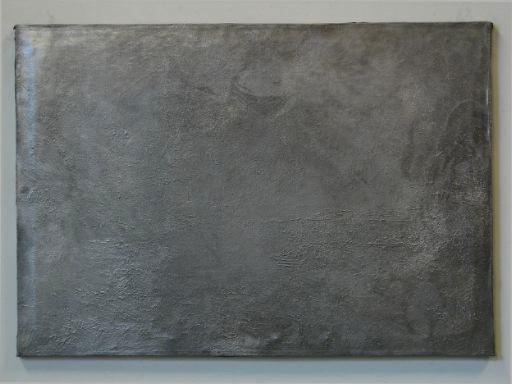
Title: Ölbild (Oil Painting), 2007
Aluminium sandcasting
98 x 69 x 1.8cm
Jürgen Drescher's artistic work is characterised by a concern with everyday objects, which he transfers directly – in the sense of “objects trouvés" that are already transferred by the artist's gesture into "ready-made" objects d'art. His videos are similarly produced in that he puts existing film material into new contexts and gives it a new interpretation.
Since the 80s Jürgen Drescher has taken everyday objects and situations as his departure point for investigating contemporary modes of existence. For some years now, Jürgen Drescher has been combining this practice with an approach characterised by scepticism and mistrust of social regulations and commercially orientated agreements.
He initially attracted attention with his aluminium casts of everyday objects, which are essentially hyperbolic sculptural metaphors. The alienating effect of the casts reevaluates the familiar objects and invests them with new layers of meaning.
For full biography: jurgendrescher.pdf
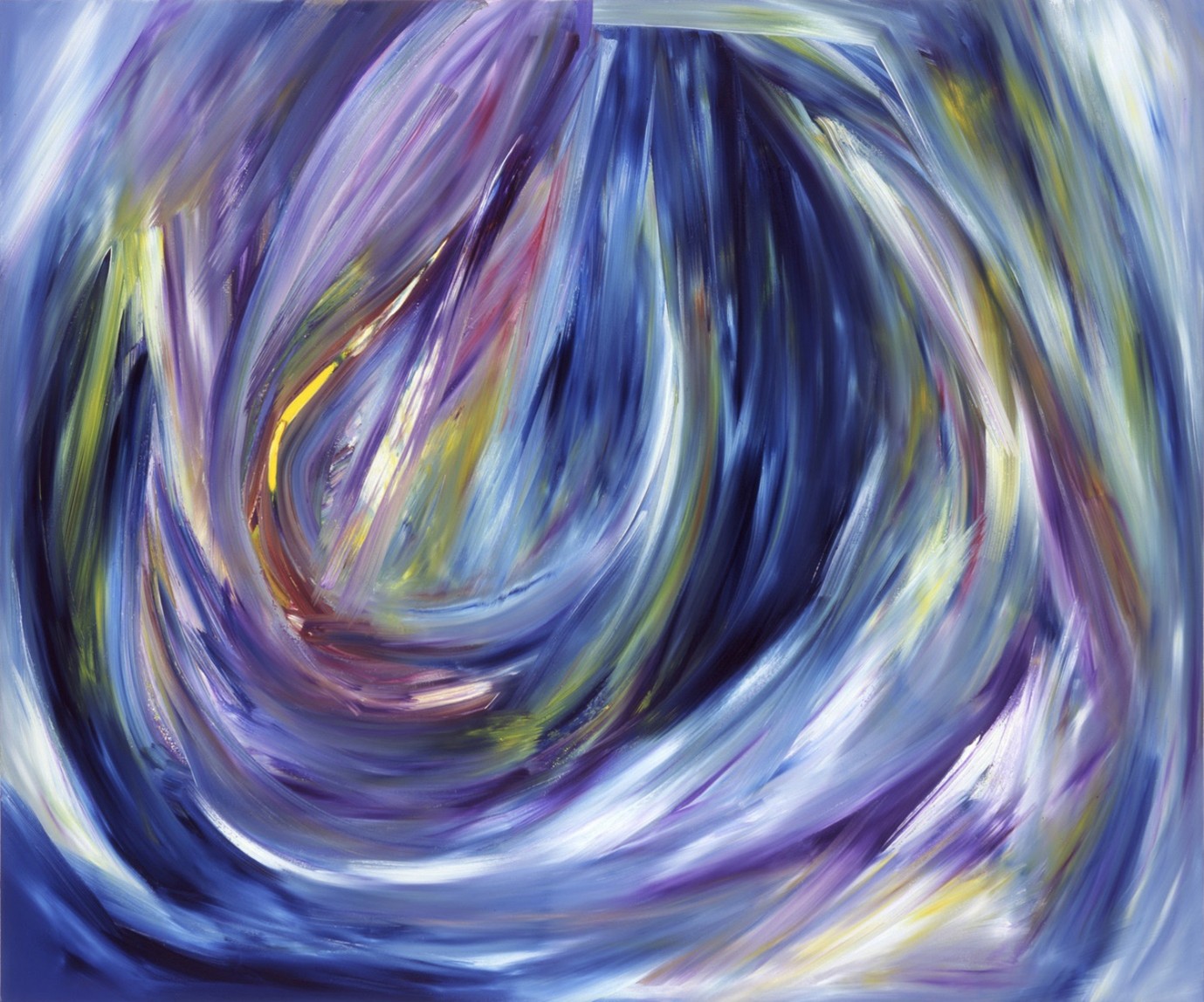
Title: Untitled ( 1777 ), 2006
Oil on canvas
48 x 60 in
Daniel Hesidence’s work is made in consecutive suites in which palatte, mark and content shift to address a specific moment in time, space and place. At their core these paintings are evocative arrangements of color, gesture, shape, and texture that tune our attention to unfixed, sometimes unfathomable visual frequencies.
Hesidence has presented work in solo and group exhibitions internationally including MoMA PS1, New York, the Royal Academy of Arts, London, and the 55th Venice Biennale.
For full biography: https://www.danielhesidence.com/
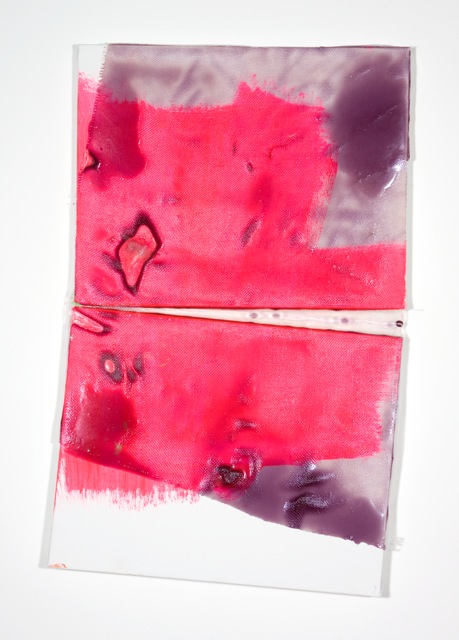
Title: Floor Work, 2010
Oil, acrylic, resin, and fiberglass on two canvases
23 x 16in
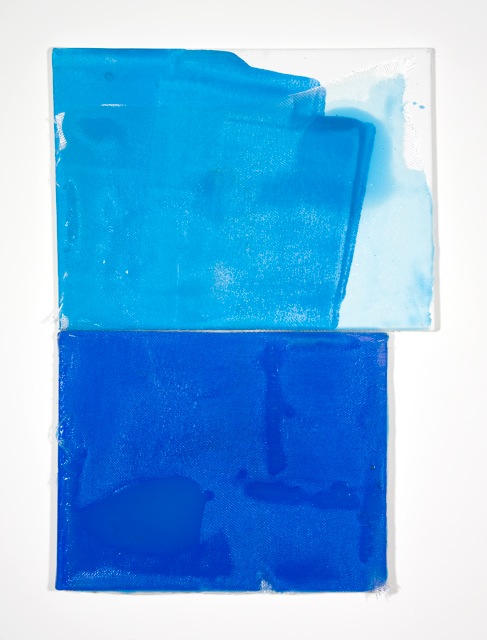
Title: 55th Street, 2010
Oil, acrylic, resin, and fiberglass on two canvases
23 x 16in
Alex Hubbard is a painter and video artist who weaves together both fields by using the same approach in each medium and thereby rethinks video, painting, and their connections.
In his paintings, Hubbard uses the volatile, fast-drying materials of urethane, resin, and fiberglass. Once applied to the surface, these materials cannot be changed. Therefore, his paintings—like the videos—always have the potential to unmoor themselves from their original plan.
This genesis, which leaves its traces in both his videos and paintings, creates the sometimes absurd, sometimes funny, and sometimes dramatic attraction of Hubbard’s works.
For full biography: https://www.presenhuber.com/attachment/en/6160a2395aac733b8c3c1163/TextOneColumnWithFile/6162de1e240abb7bc61d9b17
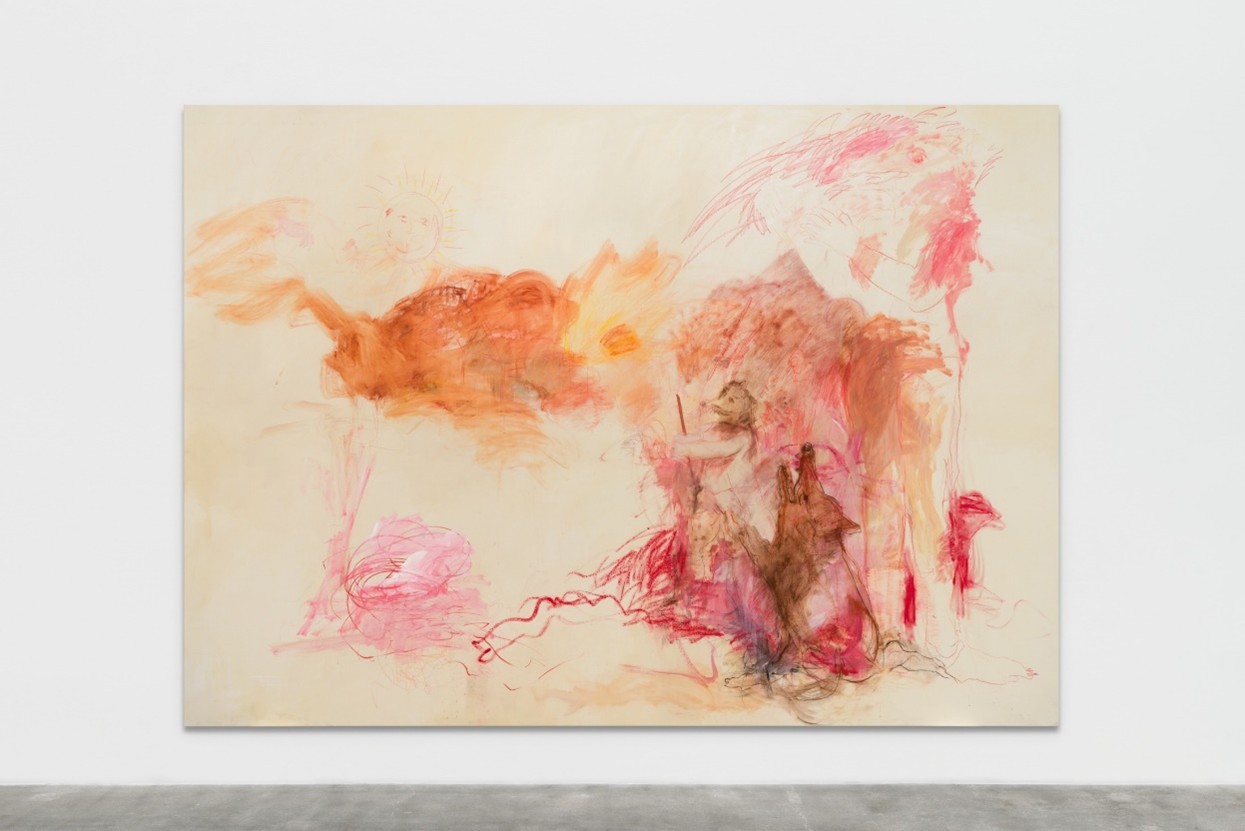
Title: Homeward Bound, 2021
Acrylic, pastel, charcoal on canvas
79 x 111 in
Sara Issakharian is a mixed-media painter based between Los Angelas and Berlin. After studying philosophy and social science at UCLA, Issakharian received her MFA in Painting at the New York Academy of Art. Born and raised in Tehran, her work takes up themes such as the grief of emigration, women’s oppression, and state violence. Her first solo exhibition in Los Angeles, ‘There’s a whole life in that, in knowing that the sun is there,’ which opened at Tanya Leighton Gallery in August 2021, explores the duality of light and darkness. Issakharian’s work has been featured internationally at Art Basel, Miami Beach and Art Basel, Switzerland, and has travelled to India, Iran, and Lebanon.
In her solo exhibition interview, Sara said “I love Dostoevsky and I'm always influenced by his literature, and ‘There’s a whole life in that, in knowing that the sun is there,’ is one of my favorite quotes. The influence this takes in the works is mostly related to the social status of women in Iran and what they're going through. They live an ordinary life, like us. But in terms of having rights, they basically don't have any rights. When it comes to getting divorced, or leaving the country, or taking care of their kids, they have to get permits from their husbands or their fathers to be able to do any of those things. I grew up in that kind of society, witnessing women still being so happy and powerful and courageous, still celebrating life to the utmost. This contradiction, celebrating life despite all of the difficulty that society puts in your way, is magic. That's the reason for the title of the series. It's more realistic than pessimistic or optimistic, I think.”
For full biography: issakharian_cv.pdf
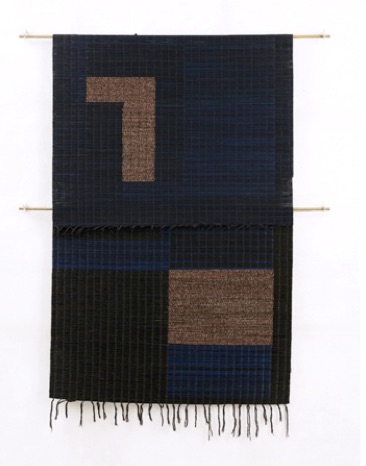
Title: (i) Mat Black Mat, 2017 - 2018
Thread, weaving dyed sedge, brass
Dimensions variable
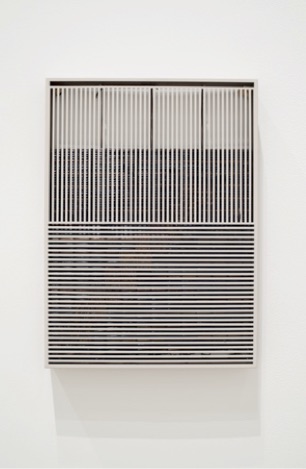
Title: (ii) Mat 55 x 40 #18-1, 2017 - 2018
Painted steel, thread, woven dyed rush, wood frame, brass bolt, leather
42 x 57 x 5 cm
Suki Seokyeong Kang’s (1977-2025) research-driven practice spanned across media, incorporating sculpture, painting, video, installation, and performance, as she investigated the notion of space and its relationship to an individual’s social position within society.
Kang appropriated the formal language of the grid used in traditional Korean musical notation as a spatial and social structuring device. The grid is translated and reproduced as standing formations in her works that balance against, hinge on, and even protrude from the wall. In her works, the sculptures in the space appear and are further activated in her videos or performances. Hwamunseok– mats used in traditional Korean court dances are produced from woven sedge by Korean craftswomen. Each of these signals the minimum space an individual is provided in society. As these notations multiply, Kang configured them into a rich visual score suggesting the possibility of a collective consciousness rooted in individual action.
Suki Seokyeong Kang graduated with BFA and MFA in Oriental Painting at Ewha Woman’s University, and MA in Painting at the Royal College of Art, London. In 2018, Kang won the Baloise Art Prize at Art Basel with her works acquired by Mudam Luxembourg.
For full biography: suki-seokyeong-kang_cv-5.7.2025.pdf
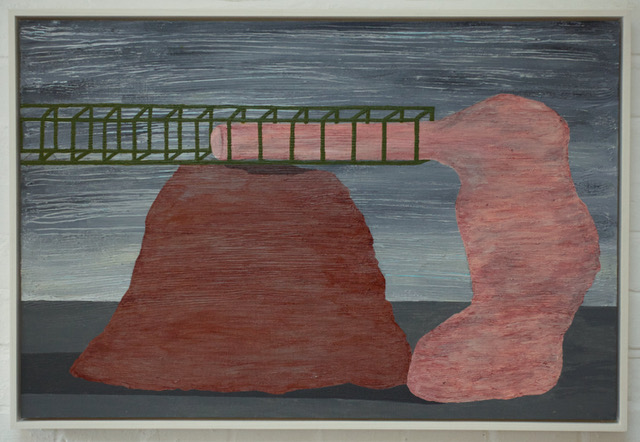
Title: ellowed call, 2019
Acrylic on canvas board
75 x 50cm
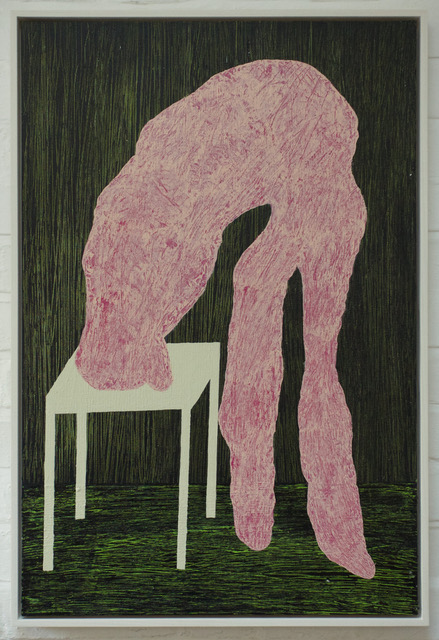
Title: Rising Whisper, 2020
Acrylic on canvas board
76 x 50cm
Kathy MacCarthy grew up in post-industrial Liverpool in the 1960s and 70s. Her memory of the landscape of abandoned domestic and manufacturing buildings throughout the city, coupled with the development of her interest in the body as form and mass has continued to provide a rich foundation for her work.
MacCarthy, a mixed media artist, worked with a range of media including wood, aluminium, plaster, latex and ceramics. For MacCarthy these works instill both a kind of hapless humour and playful pathos. With an earnest sense of the impossibility of her ambition, she has said that she wants her work to be “about everything”.
Kathy MacCarthy has a BA in Fine Art from Brighton Polytechnic (1980) and an MA in Fine Art Sculpture from the Royal College of Art, London (1983). She has exhibited widely over the last 30 years and taken part in various residency programmes and led workshops at a number of galleries including the Whitechapel Art Gallery, the National Portrait Gallery and Camden Art Centre. She has taught at a wide range of art schools since the mid-1980s, including in London at Central St Martins, and Chelsea School of Art, and at Falmouth School of Art. In 2015 She was elected as a member of the Royal Society of Sculptors.
For full biography: PEER Exhibition: Kathy MacCarthy — Peer Gallery
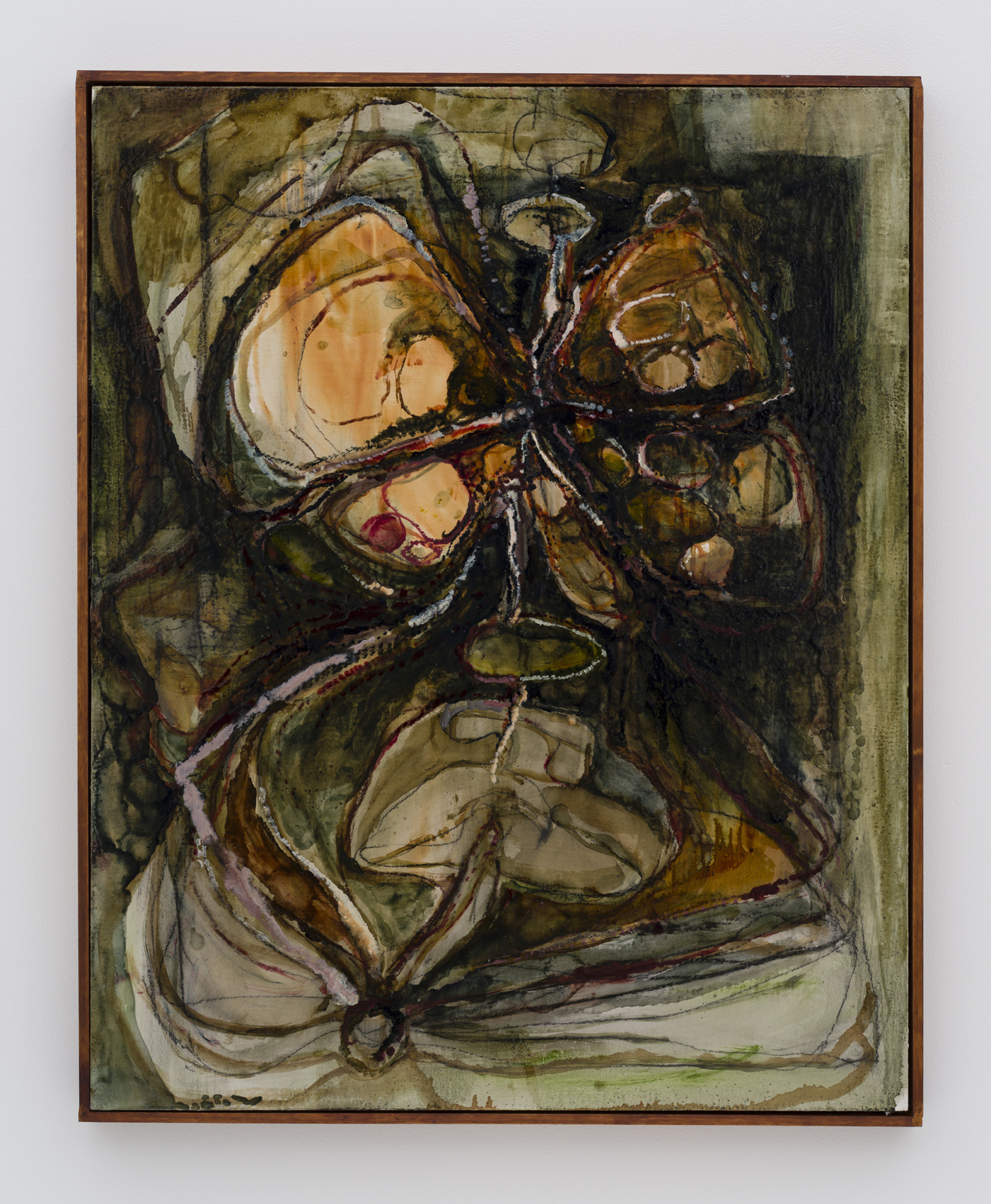
Title: Picked up green, 2022
Oil, charcoal, plaster an gauze on wood panel
93.5 x 73 cm
Reina Sugihara is a Tokyo-based artist. She received her BA from Tokyo University of the Arts in 2013, and an MA in Painting from the Royal College of Art in London in 2018. Sugihara is a member of an artist collective, through which she co-ran an exhibition space in Tokyo called 2x2x2 with Toru Otani.
For full biography: Empty Gallery – Reina Sugihara
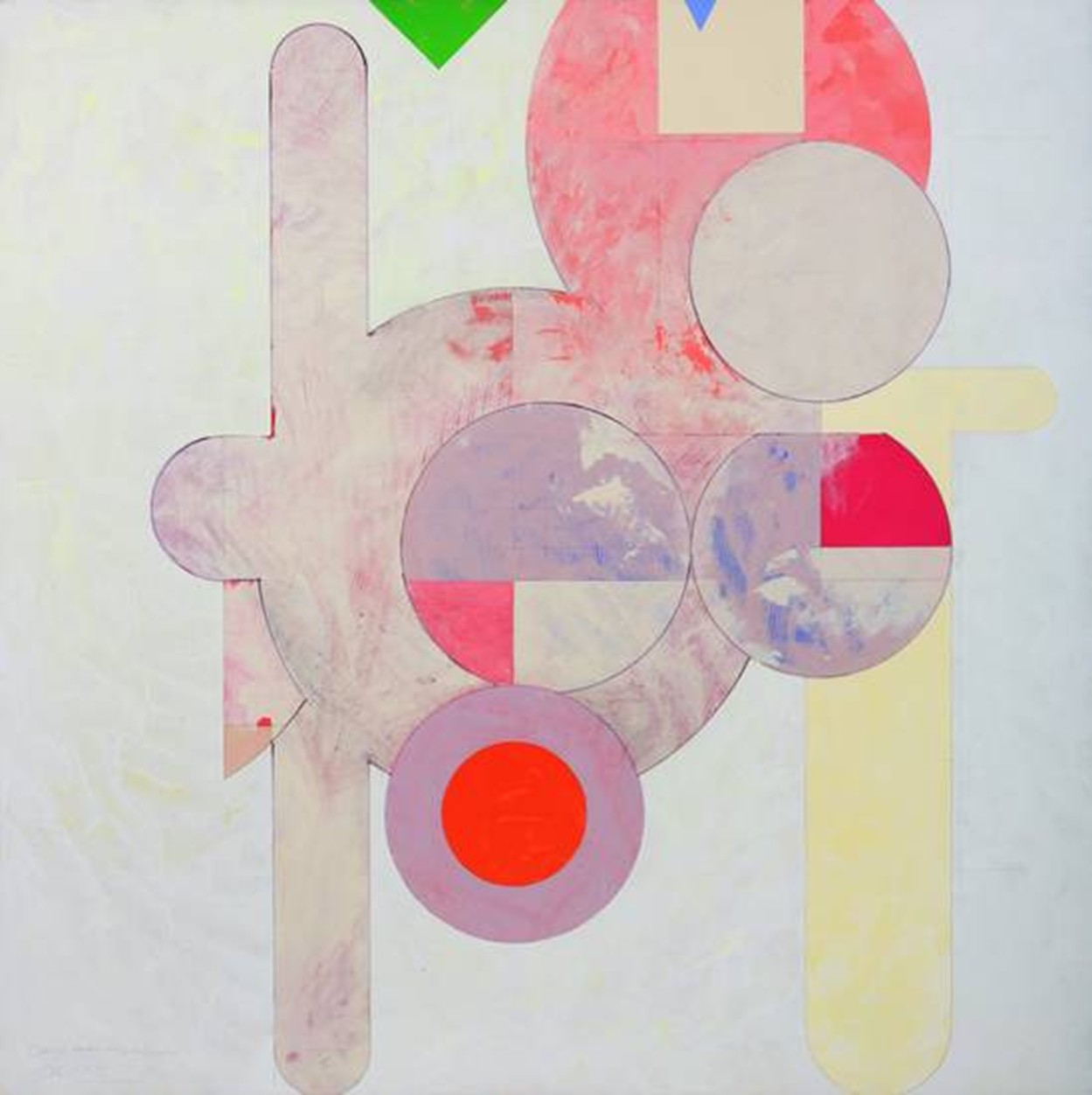
Title: I Hear You Knocking But You Can’t Come In, 1983
Acrylic on canvas
172.7 x 172.7 cm
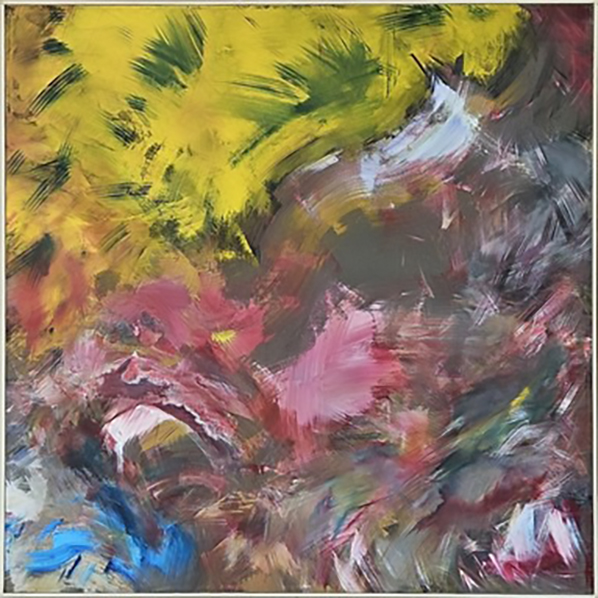
Title: Untitled, 1988
Acrylic on canvas
172.7 x 172.7 cm
Hassel Smith (1915 - 2007) was an innovative and influential artist based on the West coast during the significant early phases in the development of American Abstract Expressionism. Primarily a painter, Smith was also active in drawing, printmaking, sculpture, assemblage, collage and poetry.
His work navigated a unique evolution of pictorial language between contrasting iterations of figuration and abstraction. Hassel Smith was a charismatic teacher, an historic member of the post-WW2 faculty at the California School of Fine Arts, San Francisco, under the leadership of Douglas McAgy and Clyfford Still. Smith later moved permanently to England and taught at the Royal West of England Academy (later Bristol Polytechnic) from 1966 to 1980. His paintings have been collected by thirty American museums, and the Tate Modern, London.
Smith worked exclusively with acrylic paints from 1970 onwards, developing an unparalleled series of hard-edge abstract paintings, identified by the artist as ‘measured works.’ The series is characterized by a compositional strategy based on underlying grids, thin application of high-density acrylic pigments, and versatile use of compass in drawing.
For more information: www.hasselsmith.com
